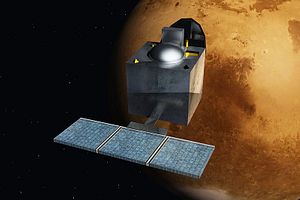In the beginning of March this year, the Indian Cabinet cleared the establishment of a private institution, the Newspace India Limited (NSIL), under the Department of Space. While the development may not have received as much international attention as some of the other space- and defense-focused developments in India, it bears careful watching as it is in line with New Delhi’s ongoing efforts to build out the commercial aspect of its space program.
India’s focus on the commercial aspect of its space program in general and moves such as the establishment of NSIL are not entirely new or surprising. This follows from the Narendra Modi government’s plan to make space a major industry focus under the government’s Vision 2030 announced in this year’s interim budget. The 10-point agenda in Vision 2030 included making India “the launchpad of the world and placing an Indian astronaut in space by 2022.”
With respect to NSIL itself, the new entity has been set up with a paid-up capital of around $1 million. NSIL will function under the directorship of Radhakrishnan Durairaj and Suma Devaki Ram, who have been Indian Space Research Association (ISRO) directors of launch services and operations respectively. They also serve on the management team of Antrix.
The new institution is the second commercial arm of the ISRO after the Antrix Corporation, which was set up in 1992 primarily to facilitate ISRO’s commercial launch of foreign satellites. The major goal for the NSIL will be to facilitate the transfer of ISRO technologies to private industries as well as aid in marketing space-based products and spin-off technologies.
Reports citing official documents suggest that in order to facilitate transfer of technology, NSIL will take license from ISRO before sub-licensing them to the commercial players. The technology transfer envisaged through the NSIL will include India’s small satellite program, the small satellite launch vehicle (SSLV) program and the Polar Satellite Launch Vehicle (PSLV). This would mean that services including launching of satellites can be undertaken by private entities once the license is procured by the NSIL.
Speaking to Times of India, Dr. Sivan, head of the ISRO, said that the NSIL will essentially become the connecting link for ISRO with commercial players to aid in technology transfer for a fee. As he put it: “We wanted a mechanism to transfer the technologies of our new projects like SSLV and even lithium-ion cells. With this company, ISRO will be able to smoothly transfer these technologies after charging fees. Once companies start mass production of small satellites and launchers, ISRO will be charging them for using its launch services.” In another interview, he had stated that he expected a demand for 2-3 SSLV rockets per month.
A January 2019 notice on the ISRO website had already shortlisted ten domestic industries for the technology transfer with regard to lithium-ion cell technology. The ISRO had already decided to transfer the PSLV rocket to the private sector more than a decade ago, though this has not yet been accomplished. The NSIL can possibly help do this quicker. On the regulatory aspects, the ISRO Chairman added that a separate “space law” is being readied, which will soon be with the Indian cabinet for its approval. It will manage all aspects of the regulation of space ventures and will “also have provisions related to the accountability of manufacturers for its space components.”
The ISRO has a proven track record in launching small satellites with the success of the PSLV. The development of the SSLV will give India a further boost in this segment. SSLV will offer an even more cost-effective option than the existing PSLV. The Chairman and Managing Director of Antrix, Rakesh Sasibhushan has said that with the SSLV, they expect to hit “a much lower cost than the PSLV” and that they were “also looking at a large increase in our revenues.” Besides the cost factor, the SSLV can also be assembled in 3-4 days as against the 40 days for a normal size rocket (Other reports suggest 15 days to assemble the SSLV).
The first test flight of SSLV is scheduled for July-August this year. ISRO has plans to launch two defense satellites of 120 kg each during the first test slight itself. The SSLVs will carry payloads between 300-500 kgs to Low Earth Orbit, thus eyeing a specific market that has not been tapped into much as yet.
ISRO’s approach to privatization and commercial engagements has come a long way, driven by the need to stay competitive at a time when there are fast emerging competitors including China and foreign commercial players who have been eyeing the global commercial space. The competition is likely to be stiff, especially in the small satellite segment given the global trend to break the big satellite constellation into smaller ones. Small satellites offer many advantages, the cost to manufacture and launch being a major consideration. ISRO’s opening to bring commercial entities into India’s space trajectory is likely to have several spin-off benefits, including for national security purposes.

































